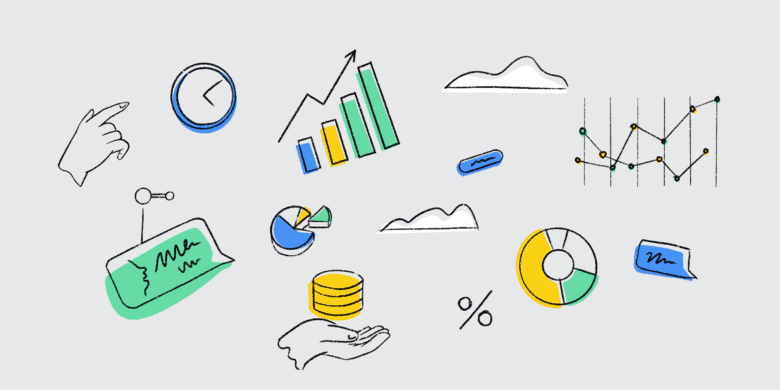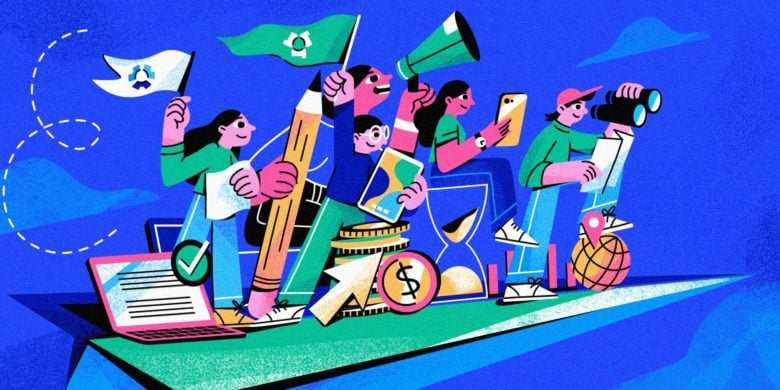Business leaders are dealing with low employee engagement, inefficient workflows, and a global workforce that demands flexibility. But thanks to the growing amount of employee experience technology, teams can access solutions that can help with communication struggles, burnout, and declining employee productivity.
The problem? Outdated systems and disconnected employee engagement tools make tracking progress, measuring success, and prioritizing employee well-being difficult. Employees expect seamless workflows, instant feedback, and tools that enhance their daily experience—not slow them down.
To drive business growth, companies need smart solutions that improve employee satisfaction and efficiency. In this guide, we’ll explore digital tools that boost employee engagement while tackling the biggest workplace challenges.
Boost your team’s efficiency with Hubstaff's productivity tools
Understanding employee experience technology
Did you know 47% of employees have quit a job (and 57% have considered it) when it negatively impacted their well-being? Attrition is expensive, as it costs 50-60% of an employee’s salary to replace them.
But keeping employees isn’t just about reducing turnover costs. A positive employee experience directly impacts motivation, retention, and business success. That means addressing employee needs at every stage of the entire employee lifecycle — from onboarding to development and long-term growth.
This is where employee experience technology makes a difference. These digital skills-focused tools help companies identify pain points, improve processes, and create a workplace where engaged employees can thrive.
Key technologies to improve employee experience
The right workplace technology should help create an environment where employees feel supported and engaged. These tools are an important component of workplace technology that helps businesses boost productivity while improving overall job satisfaction.
Learning management systems (LMS) and learning experience platforms (LXP)
According to Totara research, 87% of candidates value learning and development highly when choosing a new company to work for.
Learning management systems (LMS) and learning experience platforms (LXP) boost productivity and keep employees sharp by providing easy access to training materials. They also encourage knowledge-sharing with collaborative learning experiences.
Recommended tools:
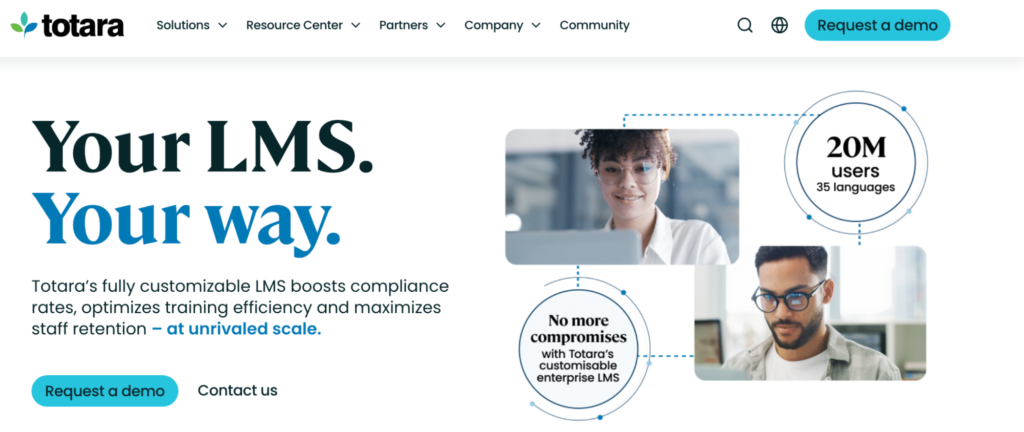
- Totara. A flexible, open-source LMS that allows businesses to create customized training programs and track employee progress.
- Docebo. AI-powered learning that adapts to employee needs to deliver personalized courses based on job roles and skill gaps.
- 360Learning. A collaborative learning platform that enables peer-driven knowledge sharing and faster skill development.
Training shouldn’t stop after onboarding. Human resources teams need tools that promote continuous learning. After all, a knowledgeable workforce is a productive workforce.
Employee feedback and survey tools
Here’s a pro tip: employee feedback is not a checkbox — it’s a direct line to what’s working and what’s not.
Many organizations conduct performance reviews, but these are often designed to measure performance rather than to understand actual employee needs. If feedback only benefits the company, it’s missing the point.
Businesses need HR tools that capture real-time insights and go beyond the standard annual check-in to get the full picture.
Recommended tools:

- Officevibe. A simple yet powerful tool that gathers anonymous employee feedback, tracks engagement, and provides managers with actionable insights — and integrates with Slack.
- Culture Amp. A data-driven platform that helps businesses collect feedback, measure employee sentiment, and implement strategic improvements.
- Peakon. Uses artificial intelligence to analyze employee responses in real time to offer personalized insights to help organizations improve employee experience.
Employee sentiment is an excellent way to gauge morale and drive real improvements. Remember: good organizations ask for feedback, but great ones act on it.
Performance management systems
A strong tech stack should include tools beyond tracking hours — they should help employees do meaningful work and grow within the company.
That’s where performance management systems come in. These platforms don’t just measure productivity; they help people align with their employer on goals and support remote work environments where visibility can be challenging.
Recommended tools:
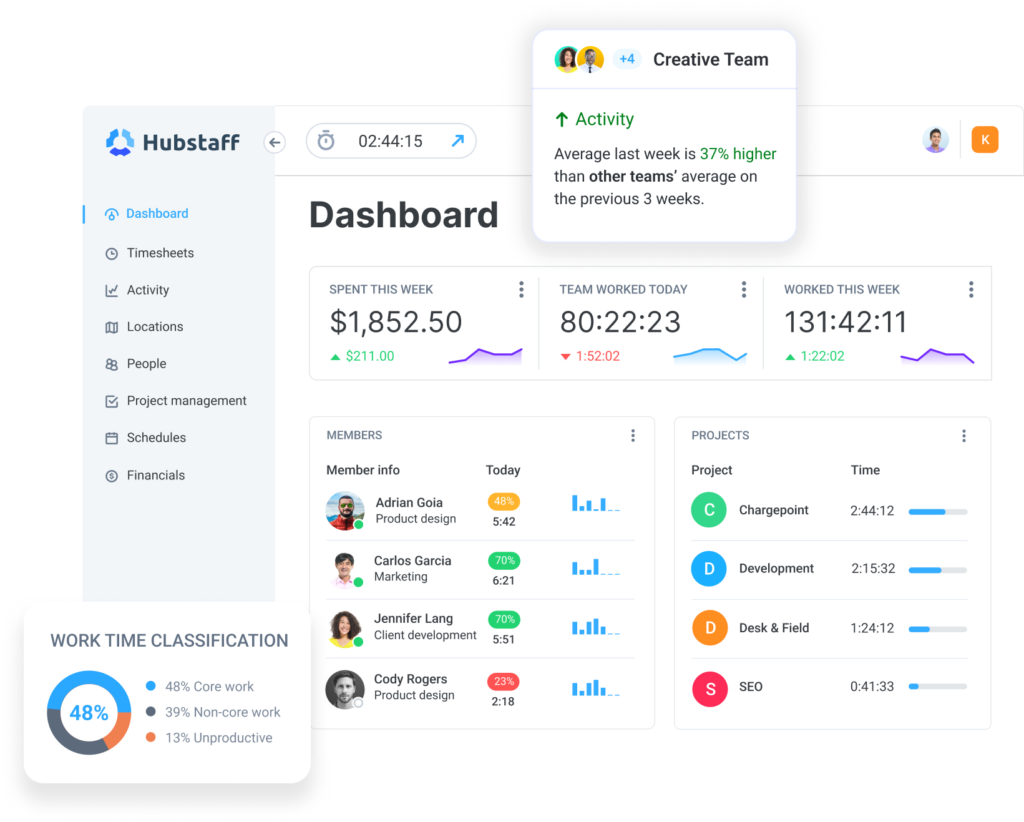
- Hubstaff. A complete workforce management solution that tracks time, tracks productivity, and provides data-driven insights to help teams stay aligned — perfect for remote work, employee experience management, and superior customer experience.
- Lattice. A performance management platform focused on continuous feedback, goal-setting, and career development.
- 15Five. A tool designed to support employee growth through weekly check-ins, performance reviews, and engagement tracking.
Employees who see how their work contributes to bigger company goals stay engaged and motivated. Conversely, when employers prioritize employee well-being, employees are more likely to contribute towards those goals.
Wellness and employee assistance apps
A great digital experience involves making sure workers feel supported mentally and physically. Wellness and employee assistance apps are crucial in reducing stress, preventing burnout, and helping companies retain top talent.
Employees who know their well-being matters are more engaged, motivated, and productive.
Recommended tools:
- Calm for Business. A meditation and sleep app designed for workplace wellness, helping employees manage stress and improve focus.
- BetterUp. A coaching platform that connects employees with professional mentors to support mental fitness, leadership skills, and career growth.
- Ginger. An on-demand mental health service providing 24/7 access to licensed therapists and behavioral health coaching.
Companies that prioritize well-being create a workplace where workers thrive.
Knowledge management tools
Whether you manage an in-office or remote team, there will be times when employee engagement simply isn’t possible. People will always have questions, but what isn’t guaranteed is that someone will always be around to answer them.
Recommended tools:
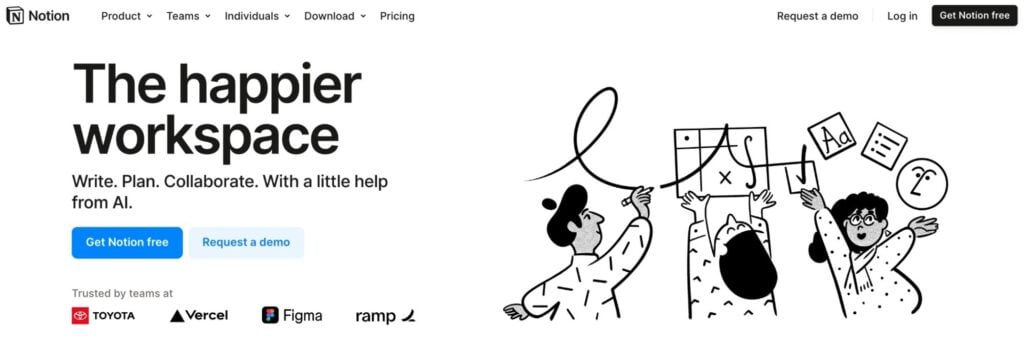
- Notion. Knowledge management platform with documentation, basic task management, and wiki features.
- Evernote. Powerful note-taking app with templates, documentation tools, and a web clipper that lets you quickly save articles and web pages to your account.
Keep important information like job descriptions, process documentation, onboarding tips, and frequently asked questions in one accessible location. This way, team team members are empowered to find the answers to their questions — even when working asynchronously.
Communication tools
Whether you’re remote, hybrid, or in-office, no business can function without strong communication. A good communication platform allows employees to share messages and files, learn about one another, and share memes (because that’s also part of the employee experience).
Recommended tools:

- Slack. Instant messaging platform with file sharing, voice and video calling, and multiple integrations.
- Zoom. Video conferencing tool that supports team meetings, webinars, messaging, and voice calls through the phone.
Video meetings (which should be kept to a minimum) should also be straightforward. If your team has to figure out how or where to join a call before it starts, you’ve already wasted a lot of time. Do your team a huge favor by including a reliable video conferencing tool in your tech stack.
How to implement technology to enhance employee experience
When rolling out new technology, the goal should be improving the technology experience for employees.
Decision-makers must strategically select tools that align with company culture and meet employee needs. Even the best solutions can fail without proper planning due to a lack of buy-in or poor adoption.
Here are some best practices to ensure successful implementation:
- Assess organizational needs with real input from employees. Conduct surveys, interviews, and focus groups to identify pain points in workflows, collaboration, and productivity. Technology should solve problems, not create new ones.
- Select the right tools based on function, ease of use, and integration. The best software fits seamlessly into daily work and aligns with company culture. If employees struggle to use it, adoption will fail.
- Check compatibility with existing systems. No one wants a disconnected stack of tools. Before rolling out new technology, ensure it integrates smoothly with current platforms to avoid disrupting workflows.
- Provide hands-on training and continuous support. Employees need more than a one-time demo. Offer interactive training sessions, how-to guides, and ongoing support.
- Gather ongoing feedback and refine the approach. Don’t assume implementation is a one-and-done process. Regular check-ins, surveys, and data analysis help identify issues and drive improvements over time.
Technology shapes the modern workplace, but success depends on execution. If you want a productive and engaging work environment, always prioritize employees.
What employee experience technology do you use?
There’s no reason for companies to provide suboptimal employee experience. While internal processes and employee guidelines will cover much of it, having good employee experience technology makes everything drastically easier.
Your employee experience tech stack doesn’t have to be permanent. If it works well now, that’s good. But you may find that as your team evolves, your needs will change, too. Adding or removing tools from your stack is okay, as you’re working with your team to figure things out.
With all of that said, it’ll take some time before you figure out what your employees need (and want) to work at their best. You’ll know you’re successful when every team member is happy and getting things done with minimal roadblocks.
Most popular
The Fundamentals of Employee Goal Setting
Employee goal setting is crucial for reaching broader business goals, but a lot of us struggle to know where to start. American...
Data-Driven Productivity with Hubstaff Insights: Webinar Recap
In our recent webinar, the product team provided a deep overview of the Hubstaff Insights add-on, a powerful productivity measurem...
The Critical Role of Employee Monitoring and Workplace Security
Why do we need employee monitoring and workplace security? Companies had to adapt fast when the world shifted to remote work...
15 Ways to Use AI in the Workforce
Whether through AI-powered project management, strategic planning, or simply automating simple admin work, we’ve seen a dramatic...


